We had actually moved into our new house 18 months before I retired, but like most new homes, the dream layout had to wait for a new lawn, landscaping, and a hundred other necessary tasks.
Starting small
Like most guys my age, my interest in trains started with a Lionel set my Dad bought for my first Christmas. By the age of four I was drawing pictures of trains and, by seven or eight, I was building HO-scale models. After a break for cars and girls, I got back into the hobby before I was married and finished college. By then I was a dyed-in-the-wool, rivet counting, Colorado-narrow-gauge nut and would model in HOn3 for the next 40 years.
In 1987, Model Railroader ran an article on my HOn3 layout, which was based on the RGS and D&RGW. By then, the layout was essentially complete, but I enjoyed what I had accomplished for the next 10 years. It was during this time I became acquainted with G-scale models. There was something about the size and heft of these models that kept me thinking about the possibility of an indoor G-scale layout. After a move that forced me to tear down my HOn3 empire, I had to try my hand with the big stuff.
On the first Monday of my retirement, a contractor covered the basement walls with 2″ x 4″ studs and sheet rock and installed a suspended ceiling with recessed flourescent light fixtures. I was ready to start on the layout.
But what did I want to build? After wrestling with this idea for some time, I decided on something really novel. I would build three different layouts! My first project would be a Mexican short line that had been percolating in my brain ever since I had picked up a copy of Gerald Best’s book, Mexican Narrow Gauge.
Heading south of the border
When I first paged through Mexican Narrow Gauge, I became enamored with the endless variety of these quirky little railroads. Not entirely unlike their Colorado narrow-gauge cousins, they exuded a charm begging to be modeled. It would give me a chance to model some interesting desert scenery and adobe structures. I thought about the scale I should use to build this Mexican railroad. Knowing that I would be limited to 2′-radius curves and a relatively small space, v” scale seemed a logical choice. This would make the #1-gauge track scale out to 42″, not unheard of in the narrow-gauge world. Bachmann equipment was the right proportion for v” scale and a certain amount of detail parts were available from other manufacturers in the hobby.
My Mexican railroad would be a freelance short line, located just south of the Arizona border. It would include a silver mine to provide online traffic, a small village with a depot and homes made of adobe, and a prominent Catholic church. The railroad would be named the Ferrocarril Minerales de Santa Lucia, or, in English, the Saint Lucia Mineral Railroad, in honor of my wife, Lucia.
The trackplan for the FCM de STL would be simple; a reverse loop at each end of a mainline connecting the two, with a spur for the mine, a passing siding, and a couple of sidings in the town of Santa Lucia. The layout would be located along one wall of the basement, with one of the reverse loops hidden in a separate room that houses my workshop.
Construction begins
First, I built an area of oak bookshelves along the wall for my collection of hobby magazines, books, videos and other reference materials. On top of the bookshelves I attached 1″ x 4″ L-girders topped by v” plywood.
I used code-332 brass Aristo-Craft track, which is laid on top of three parallel strips of 0-scale cork roadbed for sound deadening and to give it a slight ballast profile. Arist-Craft switches are controlled by choke cables that run out to the fascia board on the edge of the layout. These cables use a simple, wooden knob epoxied to the end of the cable to move the switch points back and forth. Track wiring was also kept simple with only three blocks: the two reverse loops and the mainline in between. Several sidings can be controlled by on/off switches. Power is provided by an Aristo-Craft Train Engineer radio-control system. It has proved to be reliable and easy to use.
Creating the landscape
Before I started scenery, I wanted to paint a backdrop on the wall behind the layout that would depict the typical Sonoran desert area of southern Arizona and northern Mexico. First, I primed the sheetrock walls, then followed up with a coat of sky-blue flat latex paint. I wanted to convey the bright, strong colors of the desert and, while not an accomplished landscape artist, I was satisfied with the end result.
My approach to scenery is not much different than that which most indoor modelers use today. For the general landform, I crumple up newspapers and hold them in place with staples and masking tape. Everything is covered with wet plaster cloth and a coating of molding plaster or plaster of Paris. The final covering is a mixture of dry plaster, dirt, and broken up plaster bits to represent talus slopes and small rocks. Everything is wetted down with water from a spray bottle and allowed to dry. Larger rock outcrops are modeled with an application of wet plaster of Paris and hand carved. I have found that plaster of Paris or molding plaster is strong enough for almost all scenery work and I’ve never felt the need to use Hydrocal plaster.
I color my plaster scenery with acrylic paints thinned in water and applied them with spray bottles. Ground foam, along with natural weeds, represent grass, brush, small trees, and various types of cacti. It’s all held in place with a 50/50 mixture of white glue and water. The layout is populated with over 50 modified Lemax Christmas figures (available during the holiday season in my part of the country). Though Dickensian in character, they are cast resin, so can be easily modified by grinding off unwanted details, changing the position of arms and legs, adding styrene sombrero-style hats, and repainting. They really add to the Mexican look of the layout.
Structures
With the exception of the large Catholic church, which is a modified Pola kit, all structures are scratchbuilt. The silver mine, ore bin, and hoist house are built using pre-stained balsa-wood framing, much like real buildings would be framed. I used CA cement to assemble the buildings. The exterior sheeting is birch stripwood from the doll house section of a hobby store, and is pre-stained before being applied. Windows are by Grandt Line. Each building has complete interior detailing and working interior and exterior lights.
The Santa Lucia depot, general store, and homes in the village are made from plaster of Paris, representing typical adobe construction used extensively in Arizona and Mexico. The exterior walls of the buildings are made from ∼”-thick flat plaster castings that are glued together to form the structure. Joints are hidden by applying additional plaster with a small spatula. The structure is stained with acrylic paints and scratchbuilt windows and doors are installed. The depot has a completely detailed interior and working lights.
Motive power and rolling stock
Being a small railroad, the FCM de STL does not have an extensive roster of equipment. The largest piece of motive power is a Bachmann 2-4-2 steam engine. This locomotive has been “Mexicanized” by extensive modifications to both the engine and tender. It has been converted to an oil burner by removing the tender coal bunker and replacing it with an oil tank. The headlight was relocated to the boiler front, as was the bell. Access steps were added from the pilot deck to the running boards and all plastic piping and grabirons were replaced with brass wire. The cab has been widened and lowered. The generator and air pump were replaced with Precision Scale castings. The boiler backhead was extended to the rear of the cab and Precision Scale castings used to represent most of the fixtures found in a steam-locomotive cab. The engine and tender were repainted and lettered with rub-on lettering. An engineer and fireman complete the job.
An MDC Roundhouse “Big Hustler” diesel critter hauls Bachmann side-dump ore cars from the silver mine to an ore dump located in Santa Lucia. This little diesel has also been heavily modified to give it a more scale appearance and a Mexican flavor. A K-Line rail speeder, used by FCM de STL Superintendent, Juan Franzenado, for his inspection tours of the line, has also been reworked.
The railroad’s most recent acquisition is a Hartland Mack railbus. While a neat looking piece of equipment out of the box, some modifications would turn it into a south-of-the-border looking contraption. La Tortuga Verde, as it was dubbed by the local campesinos, is now a favorite piece of equipment.
I either scratchbuilt or modified Bachmann products for the remainder of the rolling stock. By removing the sides of a 20′ boxcar and replacing them with typical open framework, I kitbashed a stock car. A 20′ flat car with a shortened Aristo-Craft tank mounted on the deck serves as a tank car. A Bachmann four-wheel logging caboose was converted to an eight wheeler, with platform ends similar to the D&RGW.
The railroad today
The FCM de STL is mostly complete. I have enjoyed my experiment in large-scale modeling and have tried some new techniques in the process. Next up is a larger layout featuring both Midwest steam and trolley lines and a Lake Michigan harbor scene.
Name: Ferrocarril Minerales de Santa Lucia
Size of railroad: 23′ x 9’6″
Scale: 1:24
Gauge: #1
Theme: Mexican narrow gauge
Era: 1940s
Age: Four years
Motive power: DC track power
Length of mainline: 40′
Maximum gradient: 0%
Minimum radius: 2′
Type of track: Aristo-Craft
Structures: Scratchbuilt, one kitbashed Pola kit
Control system: Aristo-Craft R/C Train Engineer





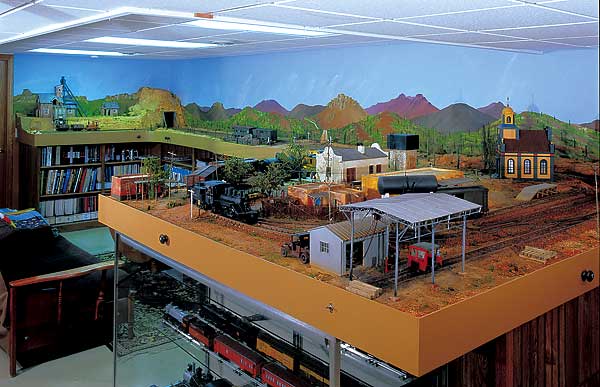
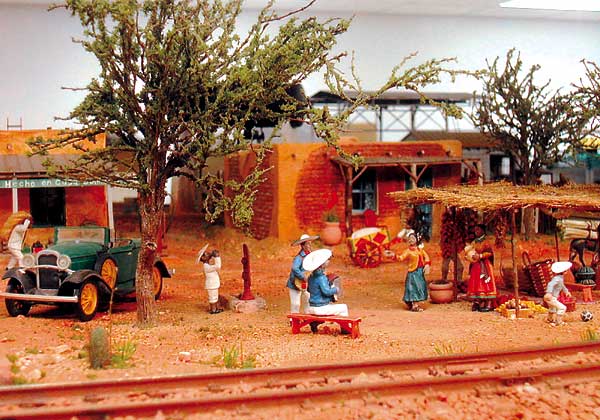
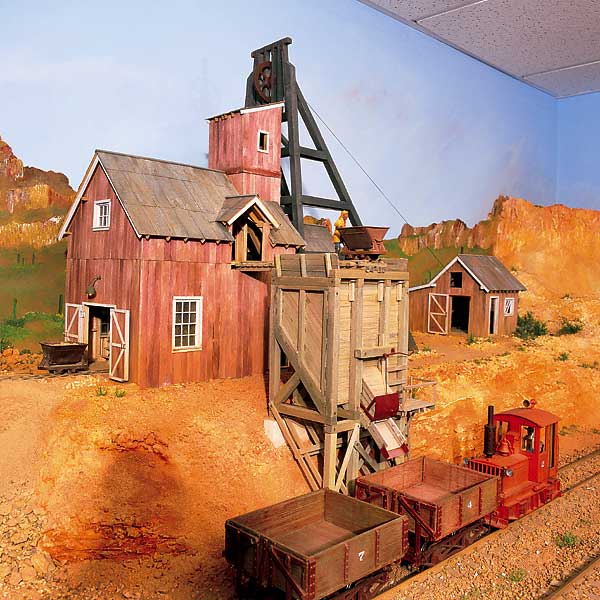
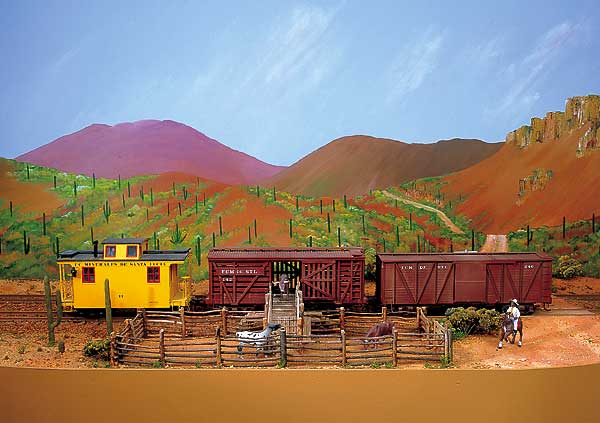
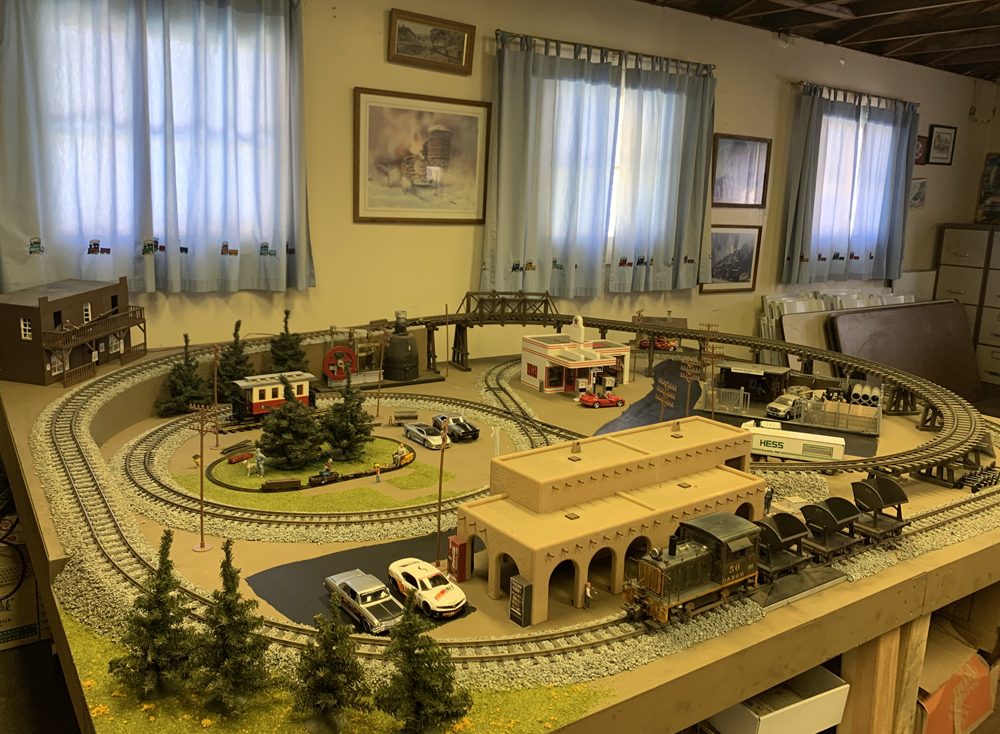
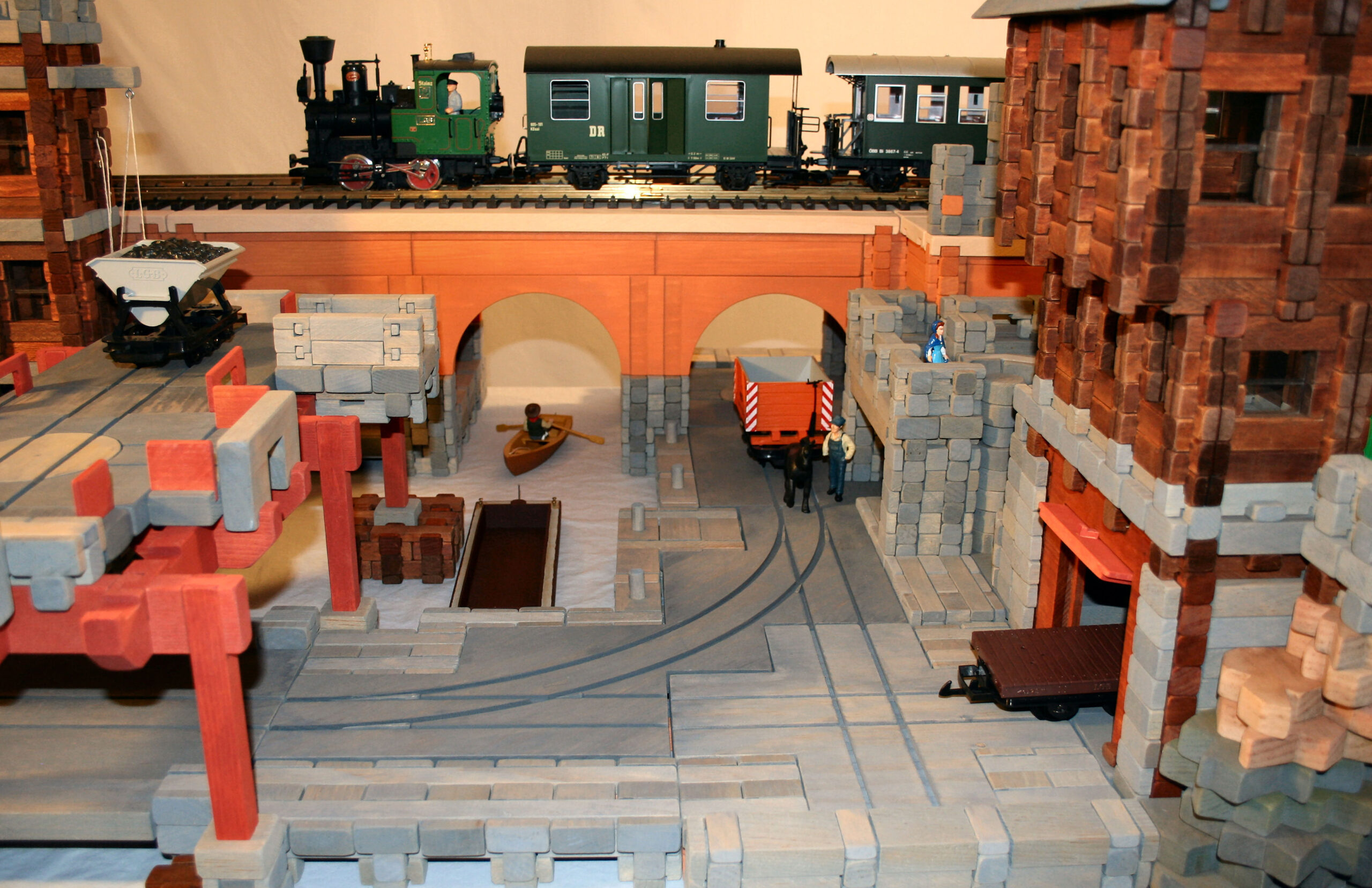
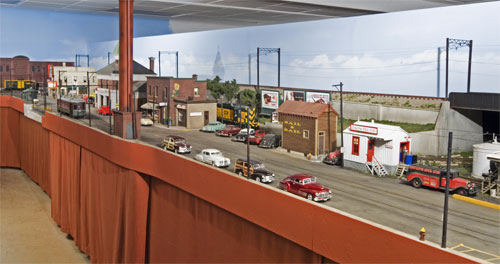
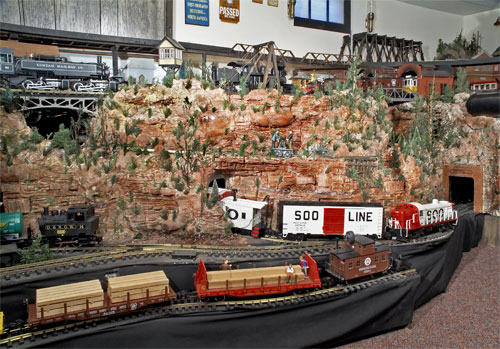
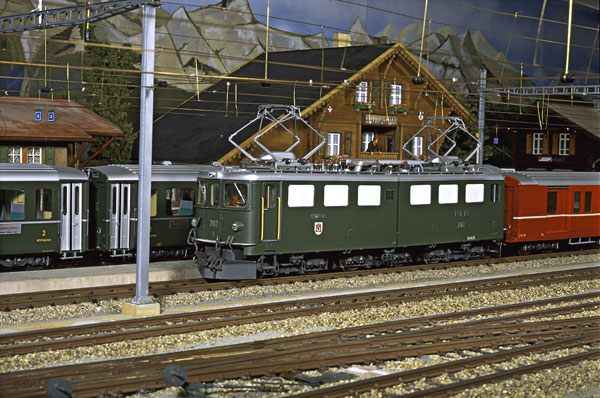





A beautiful show of craftsmanship indeed! For once and for all the FCMdeSTL should eliminate any rumor that you
can’t construct a large scale railroad indoors with operating possibilities. As a longtime admirer of the late John Allen and his original HO scale Gorre & Daphetid HO scale layout you have given me the inspiration to consider building my own indoor version of the GD Line in large scale. Thank you John for sharing your masterpiece with
Garden Railway readers.